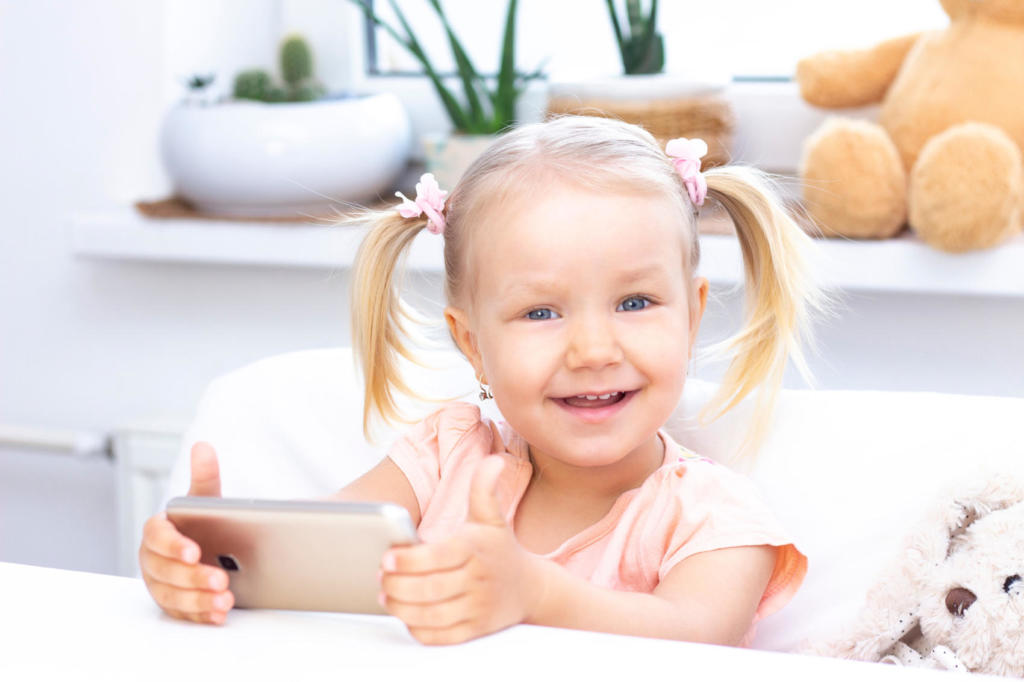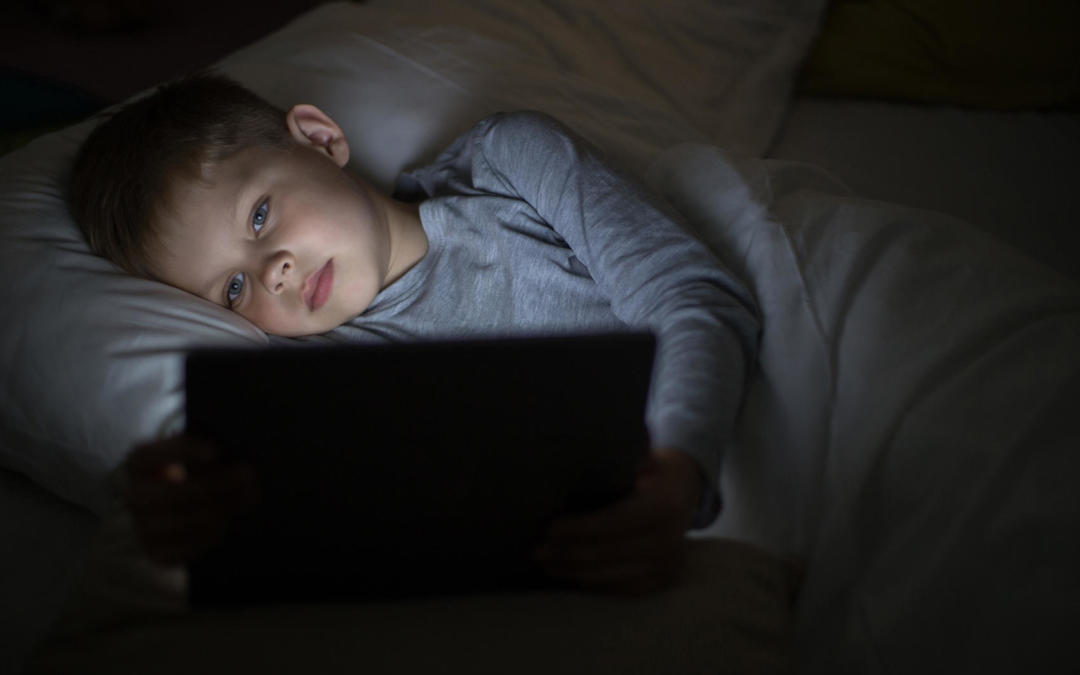Article taken from a publication by Dr. Emanuela Malorgio
National coordinator of the Sleep Study Group – FIMP (Italian Federation of Pediatricians)
In recent years a lot has been written on the indiscriminate use of electronic devices (devices) as a cause of sleep disorders and neuro-development disorders , in particular of school learning in children and adolescents (1).
According to an American review, devices are present in the bedrooms of 75% of children and 90% of adolescents; moreover, about 60% of the adolescents interviewed report viewing or interacting with screens in the hours preceding sleep (2).
A recent systematic review of 67 studies on the time of use of the screen and the media in young people and adolescents (1999-2014), showed in 90% of the population examined, a reduction in total sleep time with a consequent sleep deprivation, linked to to the use of evening and night devices (3).
The regular use of devices by children is also widespread in Italy as in many other European and non-European countries (in Ireland, for example, recent studies have shown that one in two children uses touchscreen devices every day).
But little has been written about younger children
Yet it is common experience how widespread the use of smartphones, tablets , televisions and PCs as “babysitter” is among children even younger than one year.
A study by the FIMP (Italian Federation of Pediatricians) in 2016 highlighted how 1 in 5 children between 1 and 5 years old uses a device every day and has correlated this use with a sleep deprivation that is based on the reduction of the total time of sleep itself and on the greater latency to sleep (time of falling asleep).
The ways in which the devices cause a sleep disorder in young children do not differ from those relating to adolescence:
- the evening use of the devices extends the latency time to falling asleep by reducing the total time of sleep;
- the content of what the device normally offers (movies, cartoons, violent and / or fast games) excites the CNS , increases the level of cognitive arousal, stimulating excitatory neurotransmitters and counteracting o delaying the secretion of sleep-inducing substances : furthermore, playing with a touchscreen device with a higher level of interactivity could be more stimulating than simply looking at a stationary device with a non-interactive screen;
- the light emitted by the videos (especially blue light) reduces the production of endogenous melatonin , through the stimulation of the photo-neuro-endocrine system.
The American Academy of Pediatrics , after reviewing existing literature on traditional and new media, has published 2016 guidelines recommending families to avoid any use of digital media by children up to 24 months , limiting the use of the screen to 1 hour per day for children aged 2 to 5 always choosing programs with good quality content.

Surely these can be advice that is not easy to accept by parents, but two very important aspects must be considered:
- the first is that the development of the brains of children occurs significantly in the first 3 years of life , a period in which the central nervous system is at the most vulnerable stage of development.
- the second is linked to the fact that the child in the first years of life builds what will be there “Mother library” of the fundamentals on which they will build all knowledge and intellectual abilities … and translated we could say that a correct use of these devices will make your child more intelligent and awake. This idea could facilitate greater adherence to these recommendations.
It is no coincidence that we speak of ” correct use of devices “. In fact, the advice of “do not use “the devices is anachronistic and is more in keeping with the evolution of our times, suggest a “Intelligent use ” of devices: for example by inviting mum and dad to postpone the approach of the baby to the devices after two years , favoring in the first 24 months reading and interpersonal play of the child (as a “babysitter” grandparents, nursery school, nursery school or playroom are certainly better than television or smartphones).
Subsequently, it is important to establish, together with the parents, when and how to use these tools from 24 months onwards, recommending their use for 1 or 2 hours a day and away from falling asleep . At this time it is advisable to share a book reading, a good habit both to consolidate a good relationship with your child , and to facilitate his or her school learning (who knows whether some dyslexia , or dysgraphia or “dysgraphia” will be reduced, through a constant reading books …).
Another valid help in regulating sleep can be provided by phytotherapy .
Xerenens® oral spray helps babies sleep well. Its natural components have been specifically designed for children from 1 to 5 years of age and contain titrated phytocomplexes that promote sleep regularization, relaxation and mental well-being. Thanks to its milk and biscuit flavored oral spray formulation, Xerenens can be administered more easily by parents.
References
- Monique K. LeBourgeois, Lauren Hale, Anne-Marie Chang, Lameese D. Akacem, Hawley E. Montgomery-Downs and Orfeu M. Buxton. Digital Media and Sleep in Childhood and Adolescence. Pediatrics. 2017; 140 (Suppl 2): S92 – S96
- Ahearne C, Dilworth S, Rollings R, Livingstone V, Murray D. Touch-screen technology usage in toddlers. Arch Dis Child 2016; 101 (2): 181–183
- Carter B, Rees P, Hale L, Bhattacharjee D, Paradkar MS. Association between portable screen-based media device access or use and sleep outcomes: a systematic review and meta-analysis. JAMA Pediatr 2016; 170 (12): 1202-1208
- Chindamo S, Buja A, DeBattisti E, Terraneo A, Marini E, Gomez Perez LJ, Marconi L, Baldo V, Chiamenti G, Doria M, Ceschin F, Malorgio E, Tommasi M, Sperotto M, Buzzetti R, Gallimberti L. Sleep and new media usage in toddlers. Eur J Pediatr 2019; 178: 483

